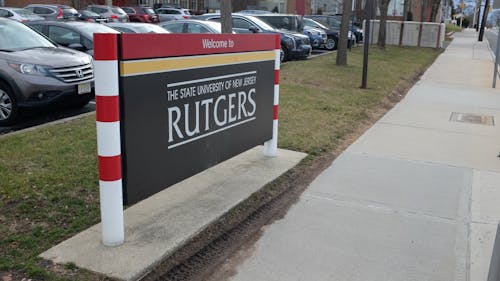Rutgers students have high share of Pell grants, report finds

Rutgers University—New Brunswick is one of the top ATI schools, according to a report from the American Talent Initiative (ATI), a program designed to admit 50,000 low- and middle-income students at successful colleges by 2025.
ATI-eligible institutions must maintain a six-year graduation rate at or more than 70 percent, according to the report. Rutgers is 1 of 128 members of the ATI as of December 2019.
Approximately 30 percent of Rutgers students receive Pell grants, making the University 1 of 45 ATI schools that has a Pell share of more than 20 percent, according to the report. Rutgers is also 1 of 35 schools who have maintained their Pell share of at or more than 20 percent since the 2015-16 school year.
College degrees help facilitate upward mobility, but the cost is often a barrier to many of those who seek to enroll at a University, according to the report. Colleges with the most resources generally admit students from the top 20 percent of the national income distribution.
“Individuals from the top of the economic ladder are far more likely to earn a degree than those at the middle or lower rungs,” according to the report. “More than three-quarters of bachelor’s degrees are granted to young adults from the top half of the income distribution.”
In order to work toward the goal set by ATI, schools should commit to a comprehensive strategy at high levels of leadership and invest resources to execute this strategy, move beyond traditional pipelines of incoming students, prioritize need-based aid and ensure that all students are set up to thrive on campus, according to the report.
Since ATI started, approximately 20,000 more low and middle income students enrolled in the 320 schools with the highest graduation rates, according to the report. The 128 schools that have committed to their goal, including Rutgers, have contributed a disproportionate share of the increase, according to the report.
The Rutgers Future Scholars program has helped the school work toward the ATI goal, according to an article from Rutgers Today. The program admits 215 new first-generation, low-income, academically promising middle school students from New Brunswick, Piscataway, Newark, Camden and Rahway each year and provides them with resources to help them work toward college.
Approximately 100 percent of students in the Rutgers Future Scholars program graduate high school and approximately 400 of these students are currently enrolled at the University, according to the article. Other program alumni have chosen to go to community college prior to attending Rutgers and some went to other four-year institutions.
Courtney McAnuff, vice chancellor for enrollment management, said the University wants students from lower economic backgrounds to be successful, according to the article.
“Our high graduation rate for all students, including Pell Grant recipients and (Black) students, proves that our mentoring and other support systems ensure we’re not just recruiting lower-income students, but investing in their success,” McAnuff said, according to the article.
McAnuff said the University has made a point to ensure students have resources and support, which helps Rutgers maintain high graduation rates, according to the article.
Rutgers University—New Brunswick Chancellor Christopher J. Molloy created a team to improve recruitment and retention of students from low-income or historically underrepresented backgrounds along with first generation college students, according to the article. The University is also looking into a dual-admission pathway for community college students who want to attend Rutgers after earning their associate’s degree.



